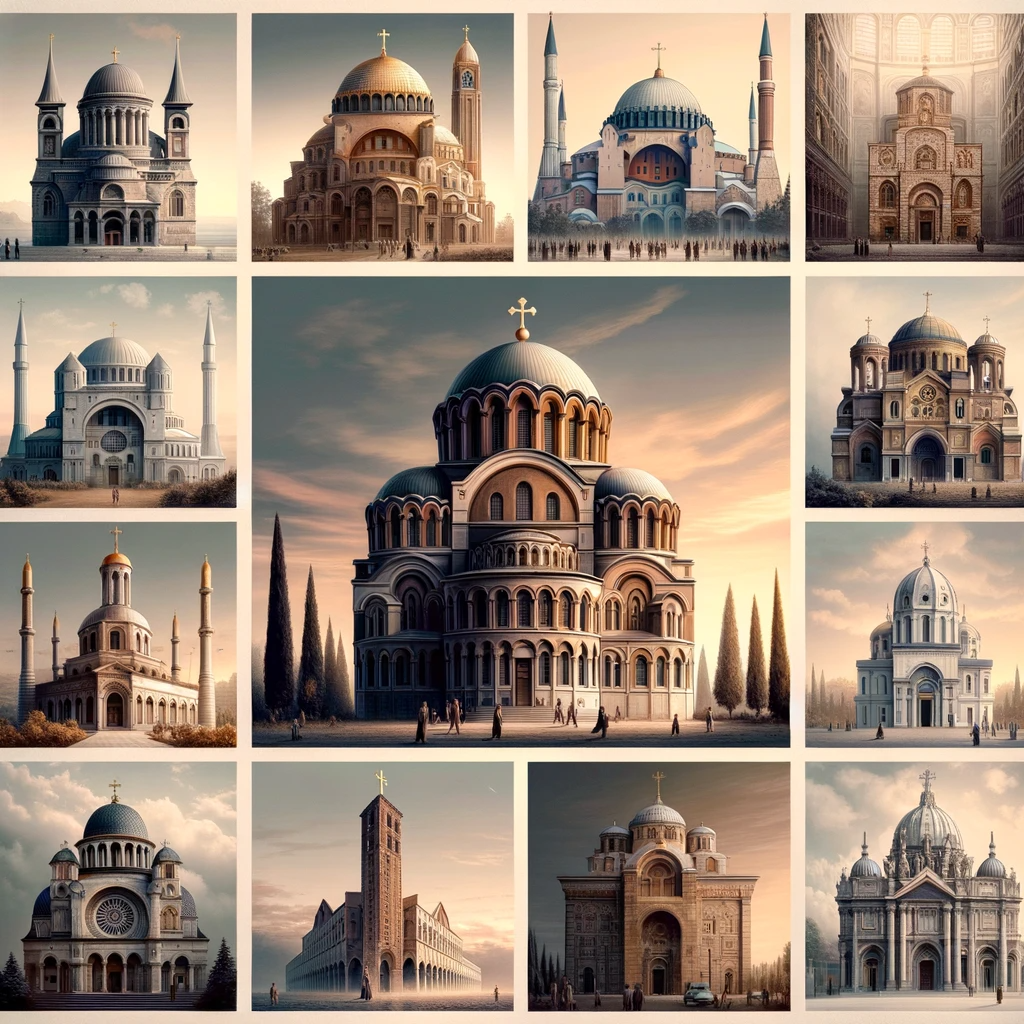The Sayde Church, with its magnificent exterior, holds a special place in the pantheon of religious architecture. Its unique design elements not only highlight its spiritual significance but also showcase a rich tapestry of historical and cultural influences. This article embarks on a comparative journey, placing Sayde Church’s exterior in a dialogue with other iconic religious buildings worldwide, revealing the nuances that make each of these structures a testament to human creativity and devotion.

The Gothic Grandeur of Sayde Church
Sayde Church’s exterior is renowned for its Gothic elements, characterized by towering spires, pointed arches, and intricate stonework. This architectural style, aimed at reaching towards the heavens, evokes a sense of divine aspiration and spiritual yearning. The church’s façade is a masterpiece of craftsmanship, with each carving and sculpture telling a story of faith and piety.
The Byzantine Brilliance: Hagia Sophia
When comparing Sayde Church to the Hagia Sophia in Istanbul, the contrast in architectural styles is striking. The Hagia Sophia, originally built as a Christian cathedral and later converted into a mosque, is a prime example of Byzantine architecture. Its massive dome, supported by pendentives, creates a centralised space that symbolizes the universe’s vastness and God’s omnipresence. The interplay of light and space inside Hagia Sophia contrasts with the verticality and ornate exteriors of Gothic structures like Sayde Church.
The Romanesque Resilience: St. Michael’s Church
St. Michael’s Church represents the Romanesque style, characterized by its robust and earthy features, such as thick walls, round arches, and sturdy piers. Unlike the soaring spires of Sayde Church, Romanesque buildings convey a sense of groundedness and stability, reflecting a different aspect of spiritual solace. The exterior of St. Michael’s, with its emphasis on mass and form, offers a stark contrast to the delicate tracery and vertical aspirations of Sayde’s Gothic elegance.
The Renaissance Rebirth: St. Peter’s Basilica
St. Peter’s Basilica in Vatican City showcases the Renaissance’s influence on religious architecture, emphasizing symmetry, proportion, and the use of classical elements like columns and pilasters. The Basilica’s grand façade, designed by Carlo Maderno, is a celebration of humanism and the rediscovery of ancient Greek and Roman ideals. In contrast, Sayde Church’s exterior, with its Gothic complexity and verticality, reflects a more mystical and transcendent approach to divinity.
The Modernist Movement: Notre Dame du Haut
Exploring modern religious architecture, Notre Dame du Haut in Ronchamp, designed by Le Corbusier, presents a stark departure from traditional forms. Its curvilinear walls, small windows, and dramatic rooflines contrast with the structured geometry and detailed surfaces of Sayde Church. The modernist approach to religious architecture, focusing on abstract forms and the interplay of light and shadow, offers a different perspective on creating sacred spaces.
Conclusion
The comparison of Sayde Church’s exterior to other religious buildings across the globe highlights the diverse ways humanity has sought to express spiritual devotion through architecture. Each style, from the Gothic spires of Sayde Church to the domed magnificence of Hagia Sophia and the modernist expressions of Notre Dame du Haut, embodies a unique cultural and historical context. This architectural mosaic not only enriches our understanding of religious structures but also celebrates the universal quest for beauty and transcendence.